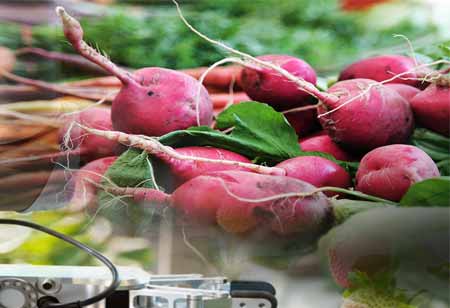Thank you for Subscribing to Food Business Review Weekly Brief
Strategies to Boost Customer Satisfaction in Food Distribution
To boost customer satisfaction in food distribution and enhance delivery speed and accuracy with advanced logistics.

By
Food Business Review | Wednesday, July 24, 2024
Stay ahead of the industry with exclusive feature stories on the top companies, expert insights and the latest news delivered straight to your inbox. Subscribe today.

To boost customer satisfaction in food distribution and enhance delivery speed and accuracy with advanced logistics. These tools track and transparent communication to keep customers informed and personalize offerings based on data to meet individual preferences.
FREMONT, CA: Food distributors can significantly improve their operations by focusing on innovative areas, such as delivery efficiency, order accuracy, inventory management, supply chain visibility, customer satisfaction, logistics costs, and technology utilization. The monitoring and refining of food distributors can reduce costs, enhance customer satisfaction, and improve operational efficiency. Here are a few strategies used:
Delivery Efficiency: Food distributors can track key performance indicators, such as on-time delivery rates and average delivery times, to identify areas for improvement. They can refine their delivery systems to reduce costs and enhance customer experience by implementing route software and tracking systems to help food distributors streamline their delivery operations.
Order Accuracy: Ensuring that the correct products are packed and delivered to customers is a complex process that requires close monitoring and quality control. This enhances customer satisfaction. Regular checks and balances are crucial to upholding high standards and fostering reliability and trust in the service, achieving accuracy and customer loyalty.
Inventory Management: Food distributors can track key performance indicators, such as inventory turnover and stock-out rates, to identify areas for improvement to reduce waste and improve product freshness. Implementing just-in-time inventory systems and automated inventory tracking helps food distributors optimize their inventory management processes, reduce costs, and improve efficiency.
Supply Chain Visibility: Implementing technologies such as GPS tracking and RFID tagging food distributors with visibility into their supply chain operations enables them to identify barriers and inefficiencies and make data-driven decisions to optimize their supply chain. Supply chain visibility also enables food distributors to respond quickly to food safety issues or product recall visibility in their supply chain operations to improve coordination, responsiveness, and customer satisfaction.
Customer Satisfaction: Food distributors can track customer satisfaction through surveys and feedback forms, identify areas for improvement, and refine their customer service operations, providing high-quality products, timely delivery, and responsive customer service. They also implement loyalty programs and other initiatives to enhance customer satisfaction and loyalty by continually monitoring and refining their customer service operations to improve customer satisfaction and loyalty.
Logistics Costs: Logistics costs encompass the expenses incurred from transportation, labor, and warehousing within the supply chain strategies, such as route optimization and automated inventory tracking, which streamlines operations and improves efficiency. The contracts with suppliers and logistics providers can further reduce expenses by continuously evaluating and enhancing their operational systems, decreasing costs, and boosting profitability.
Technology Utilization: Food distributors can monitor technology metrics, such as system uptime and data accuracy, to pinpoint areas for improvement. Utilizing digital tools, such as route optimization software and automated inventory tracking, enhances operational efficiency. These technologies streamline processes, improve accuracy, and reduce costs by continually refining their technology systems to achieve greater productivity and profitability.
By leveraging technologies, food distributors can streamline operations to improve accuracy and make data-driven decisions to drive business growth and profitability. Automation and tracking enhance inventory management, reducing waste and ensuring optimal stock levels. Advanced analytics enable better forecasting and personalized customer experiences, driving competitive advantage in global distributions.






